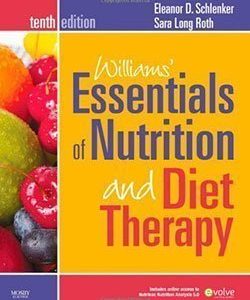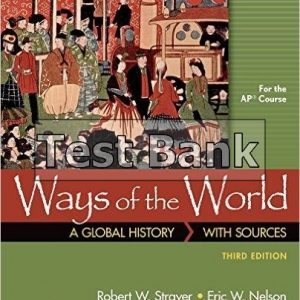Instant download Test Bank for Biology, 8e Edition: Campbell pdf docx epub after payment.

Product details:
- ISBN-10 : 0805368442
- ISBN-13 : 978-0805368444
- Author: Neil A. Campbell; Jane B. Reece; Lisa A. Urry
Carbon and the Molecular Diversity of Life, The Structure and Function of Large Biological Molecules, A Tour of the Cell,
Membrane Structure and Function, An Introduction to Metabolism, Cellular Respiration: Harvesting Chemical Energy,
Photosynthesis, Cell Communication, The Cell Cycle, Meiosis and Sexual Life Cycles, Mendel and the Gene Idea, The Chromosomal Basis of Inheritance, The Molecular Basis of Inheritance, From Gene to Protein, Control of Gene Expression,
Viruses, Biotechnology, Genomes and Their Evolution, Descent with Modification: A Darwinian View of Life, The Evolution of Populations, The Origin of Species, The History of Life on Earth, Phylogeny and the Tree of Life, Bacteria and Archaea,
Protists, Plant Diversity I: How Plants Colonized Land, Plant Diversity II: The Evolution of Seed Plants, Fungi, An Introduction to Animal Diversity, Invertebrates, Vertebrates, Plant Structure, Growth, and Development, Transport in Vascular Plants,
Soil and Plant Nutrition, Angiosperm Reproduction and Biotechnology, Plant Responses to Internal and External Signals,
Table Of Contents:
1 Evolution, the Themes of Biology, and Scientific Inquiry
Inquiring About Life
CONCEPT 1.1 The study of life reveals common themes
CONCEPT 1.2 The Core Theme: Evolution accounts for the unity and diversity of life
CONCEPT 1.3 In studying nature, scientists make observations and form and test hypotheses
CONCEPT 1.4 Science benefits from a cooperative approach and diverse viewpoints
UNIT 1 THE CHEMISTRY OF LIFE
2 The Chemical Context of Life
A Chemical Connection to Biology
CONCEPT 2.1 Matter consists of chemical elements in pure form and in combinations called compounds
CONCEPT 2.2 An element’s properties depend on the structure of its atoms
CONCEPT 2.3 The formation and function of molecules depend on chemical bonding between atoms
CONCEPT 2.4 Chemical reactions make and break chemical bonds
3 Water and Life
The Molecule That Supports All of Life
CONCEPT 3.1 Polar covalent bonds in water molecules result in hydrogen bonding
CONCEPT 3.2 Four emergent properties of water contribute to Earth’s suitability for life
CONCEPT 3.3 Acidic and basic conditions affect living organisms
4 Carbon and the Molecular Diversity of Life
Carbon: The Backbone of Life
CONCEPT 4.1 Organic chemistry is the study of carbon compounds
CONCEPT 4.2 Carbon atoms can form diverse molecules by bonding to four other atoms
CONCEPT 4.3 A few chemical groups are key to molecular function
5 The Structure and Function of Large Biological Molecules
The Molecules of Life
CONCEPT 5.1 Macromolecules are polymers, built from monomers
CONCEPT 5.2 Carbohydrates serve as fuel and building material
CONCEPT 5.3 Lipids are a diverse group of hydrophobic molecules
CONCEPT 5.4 Proteins include a diversity of structures, resulting in a wide range of functions
CONCEPT 5.5 Nucleic acids store, transmit, and help express hereditary information
CONCEPT 5.6 Genomics and proteomics have transformed biological inquiry and applications
UNIT 2 THE CELL
6 A Tour of the Cell
The Fundamental Units of Life
CONCEPT 6.1 Biologists use microscopes and biochemistry to study cells
CONCEPT 6.2 Eukaryotic cells have internal membranes that compartmentalize their functions
CONCEPT 6.3 The eukaryotic cell’s genetic instructions are housed in the nucleus and carried out by the ribosomes
CONCEPT 6.4 The endomembrane system regulates protein traffic and performs metabolic functions
CONCEPT 6.5 Mitochondria and chloroplasts change energy from one form to another
CONCEPT 6.6 The cytoskeleton is a network of fibers that organizes structures and activities in the cell
CONCEPT 6.7 Extracellular components and connections between cells help coordinate cellular activities
CONCEPT 6.8 A cell is greater than the sum of its parts
7 Membrane Structure and Function
Life at the Edge
CONCEPT 7.1 Cellular membranes are fluid mosaics of lipids and proteins
CONCEPT 7.2 Membrane structure results in selective permeability
CONCEPT 7.3 Passive transport is diffusion of a substance across a membrane with no energy investment
CONCEPT 7.4 Active transport uses energy to move solutes against their gradients
CONCEPT 7.5 Bulk transport across the plasma membrane occurs by exocytosis and endocytosis
8 An Introduction to Metabolism
The Energy of Life
CONCEPT 8.1 An organism’s metabolism transforms matter and energy, subject to the laws of thermodynamics
CONCEPT 8.2 The free-energy change of a reaction tells us whether or not the reaction occurs spontaneously
CONCEPT 8.3 ATP powers cellular work by coupling exergonic reactions to endergonic reactions
CONCEPT 8.4 Enzymes speed up metabolic reactions by lowering energy barriers
CONCEPT 8.5 Regulation of enzyme activity helps control metabolism
9 Cellular Respiration and Fermentation
Life Is Work
CONCEPT 9.1 Catabolic pathways yield energy by oxidizing organic fuels
CONCEPT 9.2 Glycolysis harvests chemical energy by oxidizing glucose to pyruvate
CONCEPT 9.3 After pyruvate is oxidized, the citric acid cycle completes the energy-yielding oxidation of organic molecules
CONCEPT 9.4 During oxidative phosphorylation, chemiosmosis couples electron transport to ATP synthesis
CONCEPT 9.5 Fermentation and anaerobic respiration enable cells to produce ATP without the use of oxygen
CONCEPT 9.6 Glycolysis and the citric acid cycle connect to many other metabolic pathways
People also search:
Biology
Biology Campbell
Biology Campbell 8e
Biology Campbell 8e Test Bank
Test Bank for Biology, 8e Edition: Campbell Download





